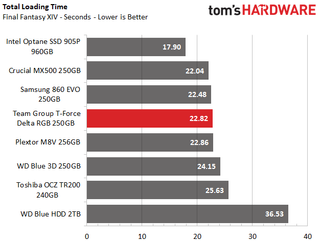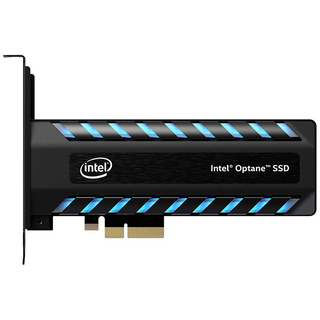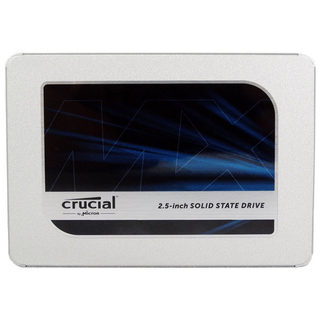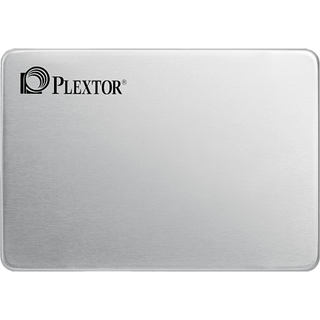Team Group T-Force Delta RGB SSD Review: RGB SSD Done Right, Kinda
Why you can trust Tom's Hardware
250GB Performance Results
Comparison Products
We included the Intel 905P and a 2TB WD Blue HDD in our performance charts. We also have the Crucial MX500 and Plextor M8V that come with the same SM2558 controller. The MX500 features Micron’s latest 64-layer (64L) TLC flash while the M8V hosts Toshiba’s latest 64L TLC flash. Also, we have the WD Blue 3D and Toshiba OCZ TR200 with Toshiba 64L TLC flash, and we threw in Samsung’s 860 EVO, which comes with its own in-house controller and 64L 3D TLC. Finally, we added in the Intel SSD 660p, which is one of the least expensive NVMe SSDs.
Trace Testing – PCMark 8 Storage Test 2.0
PCMark 8 is a trace-based benchmark that uses Microsoft Office, Adobe Creative Suite, World of Warcraft, and Battlefield 3 to measure the performance of storage devices in real-world scenarios.


Team Group’s Delta RGB lands in fifth place behind the Crucial MX500. Thanks to its four-channel controller and DRAM, it leads the Toshiba OCZ TR200, which only has a two-channel controller and no DRAM. If you're searching for the best performance in these types of applications, the Samsung 860 EVO is your pick.
Game Scene Loading - Final Fantasy XIV
The Final Fantasy XIV StormBlood benchmark is a free real-world game benchmark that easily and accurately compares game load times without the inaccuracy of using a stopwatch.

There isn't much difference between the SSDs during our game loading test in Final Fantasy. Most of the SATA SSDs take about 22-23 seconds to load the game, including the Delta RGB. Here the Delta RGB takes fourth place. It is also much faster than the Toshiba OCZ TR200.
Transfer Rates – DiskBench
We use the DiskBench storage benchmarking tool to test file transfer performance with our own custom 50GB block of data. Our data set includes 31,227 files of various types, like pictures, PDFs, and videos. We copy the files to a new folder and then follow up with a read test of a newly-written 6 GB file.


The Delta RGB delivers average file copying performance. The Samsung 860 EVO takes the lead when copying and reading data, but the Delta RGB nearly matches the M8V, which also has an SM2258 controller. It even outpaces both the WD Blue 3D and Toshiba OCZ TR200. It's almost three times faster than an HDD during the file copy test and over four times faster during the read test.
SYSmark 2014 SE
Like PCMark, SYSmark uses real applications to measure system performance. SYSmark takes things much further, however. It utilizes fourteen different applications to run real workloads with real data sets to measure how overall system performance impacts the user experience. BAPCo's SYSmark 2014 SE installs a full suite of applications for its tests, which includes Microsoft Office, Google Chrome, Corel WinZip, several Adobe software applications, and GIMP. That also makes it a great test to measure the amount of time it takes to install widely-used programs after you install a fresh operating system.


SYSmark installed very quickly on the Team Group Delta RGB. It outperformed the HDD and landed just behind the Crucial MX500 and Intel 905P. During the performance portion of the test, the Delta RGB scored a respectable 1555 points. This lands just behind the Plextor M8V, but clearly ahead of the HDD and TR200.
ATTO
ATTO is a simple and free application that SSD vendors commonly use to assign sequential performance specifications to their products. It also gives us insight into how the device handles different file sizes.


The Delta RGB delivers average performance during the read and write tests, although it lands on the lower side of the average. Our 250GB sample attained over 560MB/s of read throughput and over 520MB/s of write bandwidth, which should satisfy anyone looking for a new SATA SSD.
Anvil's Storage Utilities
Anvil's Storage Utility is a commonly-referenced benchmark that simplifies the complex IOMETER benchmark and its underlying Dynamo engine with a one-click software wrapper.



The newer 64L TLC flash has much faster write performance than the older 32L TLC NAND flash in the Delta RGB. While Team Group’s T-Force RGB Delta landed in third place, its low write performance isn't quite as impressive.
CrystalDiskMark
CrystalDiskMark (CDM) is a simple and easy to use file size benchmarking tool.










The Samsung 860 EVO, WD Blue 3D, and the Team Group Delta RGB offer similar sequential read and write performance. With results of 564MB/s read and 534MB/s write, there’s nothing to complain about.
Low queue depth performance is critical for SSDs because it directly impacts the user experience. At a queue depth (QD) of 1, sequential read and write speeds of 493/470MB/s are average results, but QD1 4K random read performance of 29MB/s is the slowest result in the group. 4K random write performance is also average at QD1. Once we dive into the deeper QDs of 2, 4, and 8, the Delta RGB continues to show weaker than average read and average write performance.
Sustained Sequential Write Performance
Official write specifications are only part of the performance picture. Most SSD makers implement an SLC cache buffer, which is a fast area of SLC-programmed flash that absorbs incoming data. Sustained write speeds can suffer tremendously once the workload spills outside of the SLC cache and into the "native" TLC or QLC flash. We hammer the SSDs with sequential writes for 15 minutes to measure both the size of the SLC buffer and performance after the buffer is saturated.


The Delta RGB’s write cache is much larger than the cache on the other drives. While the Samsung 860 EVO can hold about 12GB of writes before the cache is full, the Delta RGB absorbed 90GB of data before it filled. Once the SLC write cache filled, however, the Delta wrote at an average of 90MB/s for an additional 22GB. Once again, performance fell even further to an average of 64MB/s, which is much lower than the competition.
Power Consumption
We use the Quarch HD Programmable Power Module to gain a deeper understanding of power characteristics. Idle power consumption is a very important aspect to consider, especially if you're looking for a new drive for your laptop. Some SSDs can consume watts of power at idle while better-suited ones sip just milliwatts. Average workload power consumption and max consumption are two other aspects of power consumption, but performance-per-watt is more important. A drive might consume more power during any given workload, but accomplishing a task faster allows the drive to drop into an idle state faster, which ultimately saves power.





Team Group’s Delta RGB SSD is quite efficient. It drew an average of 1.51W during the 50GB file transfer and hit a maximum of 2.6W. With this and an average transfer speed of 120MB/s, it ranks as the most efficient 250GB SSD in its class during this workload.
At idle, the 250GB Team Group Delta RGB continues to show off its efficiency. It consumed nearly half a watt with LPM disabled, which is 2.5x more than the Samsung 860. With LPM enabled, the Delta RGB consumed under 50mW, which is a very good result.
MORE: Best SSDs
MORE: How We Test HDDs And SSDs
MORE: All SSD Content
Current page: 250GB Performance Results
Prev Page RGB SSDs Done Right, Kinda Next Page 1TB Performance ResultsStay on the Cutting Edge
Join the experts who read Tom's Hardware for the inside track on enthusiast PC tech news — and have for over 25 years. We'll send breaking news and in-depth reviews of CPUs, GPUs, AI, maker hardware and more straight to your inbox.

Sean is a Contributing Editor at Tom’s Hardware US, covering storage hardware.

Thermalright Frozen Notte and Aqua Elite 360 White V3 Review: Strong AIOs available for less than $65

Intel received €30 million from Ireland to offset higher EU power bills — Ireland and Intel continue a tight partnership in chip fabs

Get $500 off this Alienware Aurora R16 with RTX 4080 Super and Core i9-14900KF


